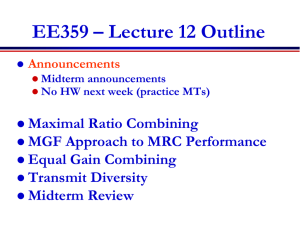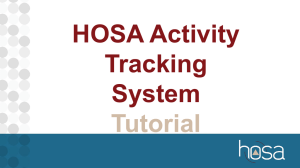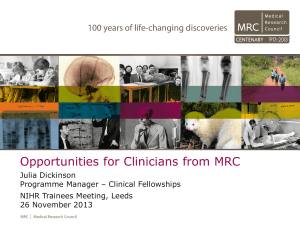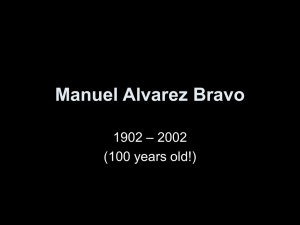Communications
advertisement
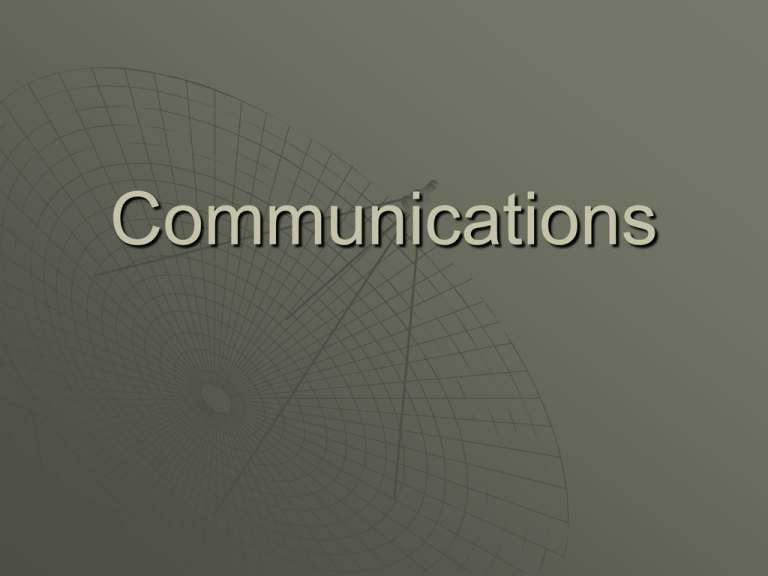
Communications - Communication is a big part of everyday life - We communicate most effectively by using both aural and visual communication - When it is not possible to use both forms, the other must become much clearer to be understood correctly - When using a radio the aural communication is made very clear through the use of procedures and a common language •Radio This revolutionised communication, enabling contact across the world. The Air Cadets Organisation uses HF (High Frequency) radio. It has its own radio stations (the ‘network’) which operates on a single frequency. •Directed Network This is a group of radio stations on the same frequency in communication with each other. It is always controlled – it has a ‘Network Control Station’ (NCS) The level of control depends on; - the level of radio discipline being observed by those using it - the adherence to proper procedures - the type of network The station used as the NCS depends on; - the equipment efficiency - the operator experience - the amount of radio communication that will be passed An NCS is usually a fixed base station. All communications go through the NCS. MRA 10 MRC 23 Network Control Station MRL 53 MRF 19 Free Network Here there is no NCS All stations are able to communicate with each other MRA 10 MRC 23 MRL 53 MRF 19 Air Cadets Must practice the safe use and successful use of radios If you do not stick to the standard operations, misunderstandings will take place and this could be dangerous Always remember that the enemy may be listening! Radio Station This is the smallest part of a network. It has at least one transceiver (to transmit and receive information) Radio Procedures Security, Accuracy, Discipline are key Call Signs The identity and location of the station should be kept as secret as possible. This is done by assigning a call sign. - 3 letters - 2 numbers e.g. MRA 23 M = in the UK R = RAF A = indication of geographical location 23 = serial number issued by HQAC If the station is mobile it could have M1, M2 etc. added to the end e.g. MRA 23 M1 Radio Procedures Always assume you have - a sender - a listener - an interceptor Service Radio Procedures are there - to safeguard meaning for authorised listeners - to make communications short (saves power from mobile units and allows more stations to communicate on the network) NEVER - use unauthorised codenames - use personal names / nicknames - use slang, jargon or foul language - transmit aircraft types, roles or weapon loads in clear speech - transmit details of arms or ammunition, particularly their movements - transmit unit locations in clear speech ALWAYS - use your callsign at the start of a transmission - use only authorised codenames and codewords - ask a station to ‘Authenticate’ if you think they may not be a genuine station calling Authentication This is a method of challenging any station that is using your network. The system used by Air Cadets asks the station to respond to one of four codes a. Alpha b. Bravo c. Charlie d. Delta Alpha The reply to this challenge is the Station’s Squadron Number (all callsigns would be pronounced using the Phonetic alphabet) e.g. MRC 28 This is MRC 56 Authenticate Alpha Over MRC 56 This is MRC 28 I Authenticate Alpha Figures 378 Over MRC 28 This is MRC 56 Correct Out ( 378 = Squadron Number) Bravo The reply to this challenge is the Station’s Squadron number in reverse e.g. MRC 28 This is MRC 56 Authenticate Bravo Over MRC 56 This is MRC 28 I Authenticate Bravo Figures 873 Over MRC 28 This is MRC 56 Correct Out Charlie The reply to this challenge is the Station’s Squadron number added to the date (day of the month). For 5 Squadron on the 12th April the answer would be 17 e.g. MRC 16 This is MRC 56 Authenticate Charlie Over MRC 56 This is MRC 28 I Authenticate Charlie Figures 17 Over MRC 16 This is MRC 56 Correct Out Delta The reply to this challenge is the Callsign number added to the date (day of the month). For Callsign MRV 92 on the 21st July the answer would be 113 e.g. MRC 92 This is MRC 47 Authenticate Delta Over MRC 47 This is MRC 92 I Authenticate Delta Figures 113 Over MRC 92 This is MRC 47 Correct Out If the reply is not satisfactory the transmission must be stopped immediately and your radio officer informed. Authenticating Bravo and Charlie should not normally be used when challenging a mobile unit. Appointment Titles These are an aid to security by concealing the level of command Veiled Speech This is used to convey information when both the listener and the sender are aware of the subject matter e.g. ‘Meet me at the same time and place as last week’ Accuracy - before transmitting listen on the frequency to ensure there is no interference - be familiar with the operation of the equipment - do not turn away from the microphone when talking and keep a consistent 50mm distance from the microphone - speak across the microphone not directly into it - do not touch the microphone during transmission (even with your lips) - use a normal voice and speak clearly and distinctly - pause slightly before and after saying numbers (for clarity) - do not ‘er’ or ‘um’ RSVP R – Rhythm (natural speaking rhythm and divide the message into sensible size sections) S – Speed (speak slightly slower than normal, use standard ‘Prowords’ to shorten the message V – Volume (loud enough to overcome background noise but do not shout) P – Pitch (some people may need to speak at a high pitch but those with a naturally high pitch should not) Prowords THIS IS – the callsign of the sender is about to follow OVER – the end of the transmission, a reply or acknowledgement is required OUT – end of transmission, not reply expected WAIT OUT – transmission has been received, a reply will follow later Prowords WILCO – message received and understood, I will comply with you instructions ROGER – I have received your transmission SAY AGAIN – request for repetition of message MESSAGE – the following transmission must be written down Prowords FIGURES – used before groups of numbers are said GRID – used before encoded reference or grid reference RADIO CHECK – report how you receive my transmission SPEAK SLOWER Prowords BREAK – said to separate text during a long transmission or the next identified station should reply TIME – the following group is a time group or a date time group UNKNOWN STATION – when calling a station whose identity is not known WRONG – your last transmission was incorrect Phonetics Letters and numbers can be pronounced using the phonetic alphabet to ensure that complex words or specific information is transmitted correctly Time should always be given using the 24 our clock Pronunciation 0 ZERO 1 WUN 2 TOO 3 TREE 4 FOW ER 5 FIFE 6 SIX 7 SEV EN 8 AIT 9 NIN ER DECIMAL DAY SEE MAL THOUSAND TOU SAND A ALPHA AL FAH B BRAVO BRAH VOH C CHARLIE CHAR LEE D DELTA DELL TAH E ECHO ECK OH F FOXTROT FOKS TROT G GOLF GOLF H HOTEL HOH TELL I INDIA IN DEE AH J JULIET JEW LEE ETT K KILO KEY LOH L LIMA LEE MAH M MIKE MIKE N NOVEMBE R NO VEM BER O OSCAR OSS CAH P PAPA PAH PAH Q QUEBEC KEH BECK R ROMEO ROW ME OH S SIERRA SEE AIR RAH T TANGO TANG GO U UNIFORM YOU NEE FORM V VICTOR VIK TAH W WHISKEY WISS KEY X X-RAY ECKS RAY Y YANKEE YANG KEE Z ZULU ZOO LOO Remember that phonetics will increase the transmission time and will reduce battery life on portable equipment and block network availability The following should always be transmitted using the phonetic alphabet; - callsign - map references - times - ATC channel numbers Number / Word Pronunciation 0 ZERO 1 WUN 2 TOO 3 TREE 4 FOW ER 5 FIFE 6 SIX 7 SEV EN 8 AIT 9 NIN ER Decimal DAY SEE MAL Thousand TOU SAND All numbers must be pronounced clearly in this way. Sending a message When a radio is first switched on you need to check id communications are satisfactory. The strength of signal is described in 5 levels: Loud, Good, Weak, Very Weak, Fading Readability (capacity of understanding) is described in 6 levels: Clear, Readable, Unreadable, Distorted, Intermittent, Interference Radio checks should include strength and readability e.g. ‘Loud and Clear’, ‘Very Weak and Readable’, ‘Fading and Intermittent’ MRG91 This is MRG84 Radio check over. MRG84 This is MRG91 Good Readable radio check over MRG91 This is MRG84 Loud and Clear out Messages The Call – the start of a message The Text – convey meaning or instructions The Ending – signify understanding and action will be taken


